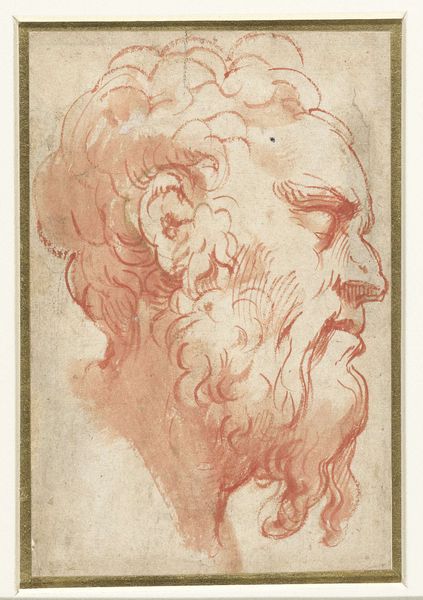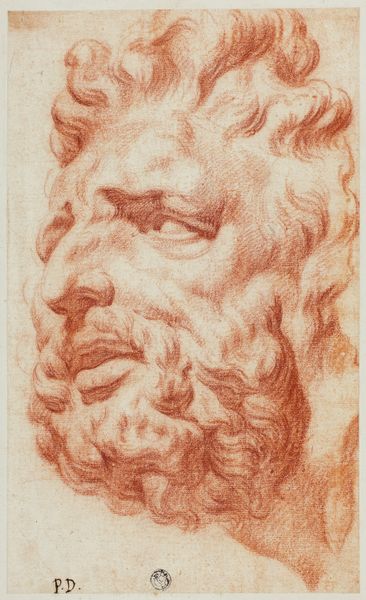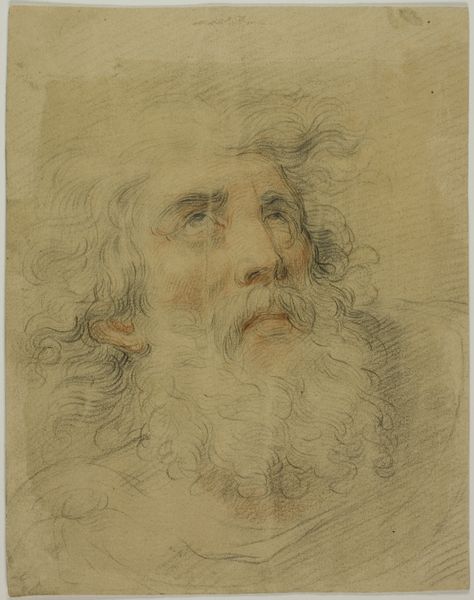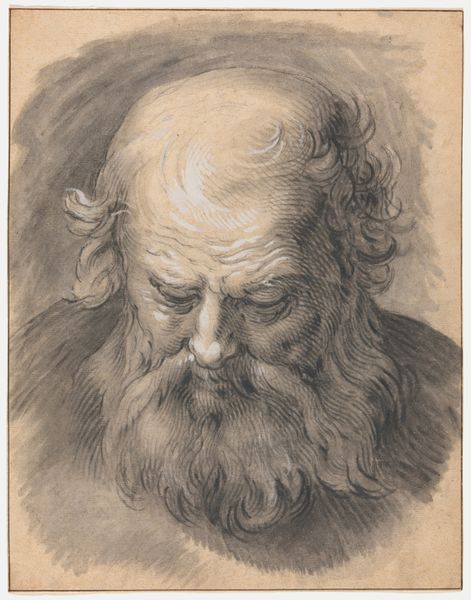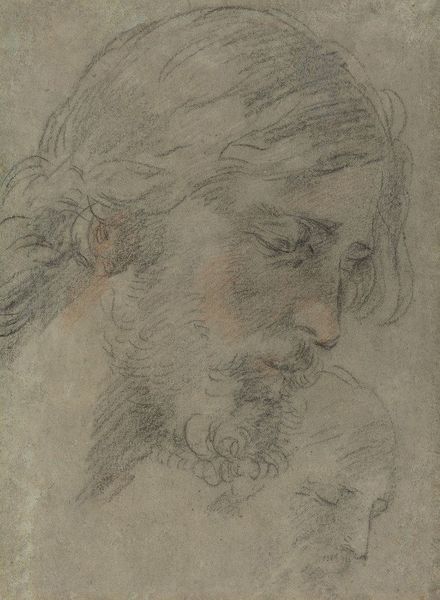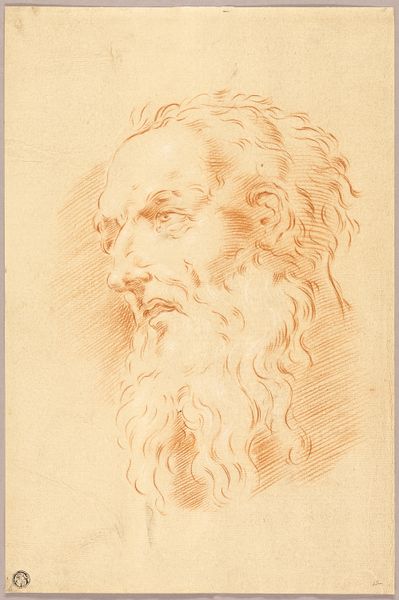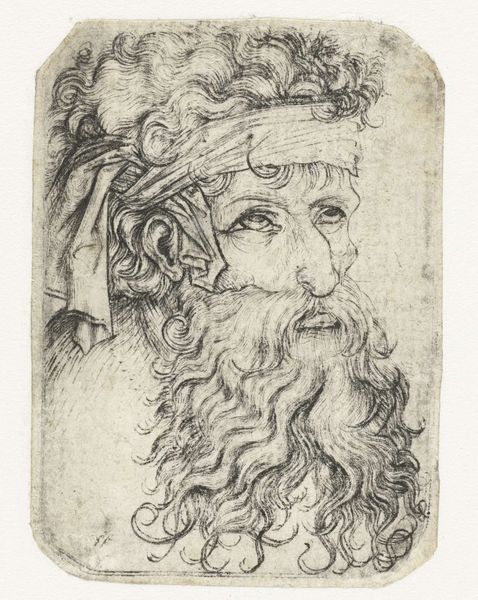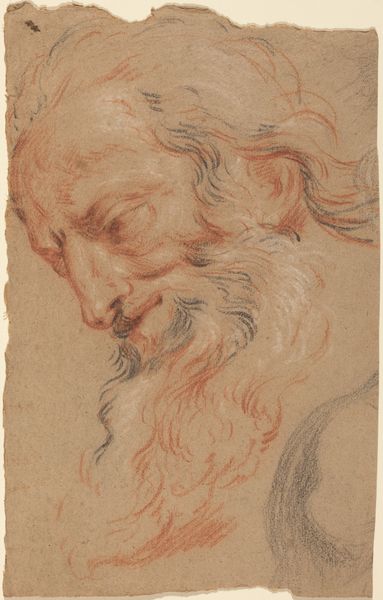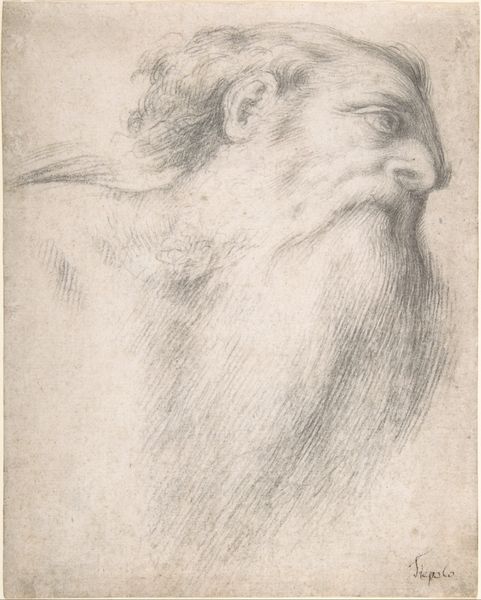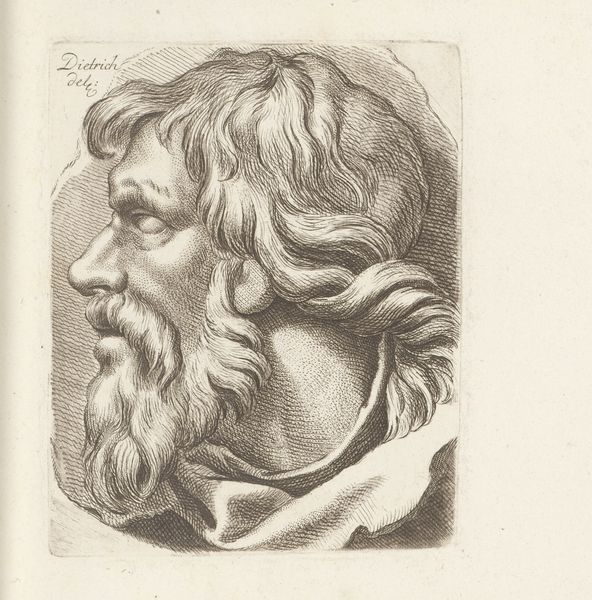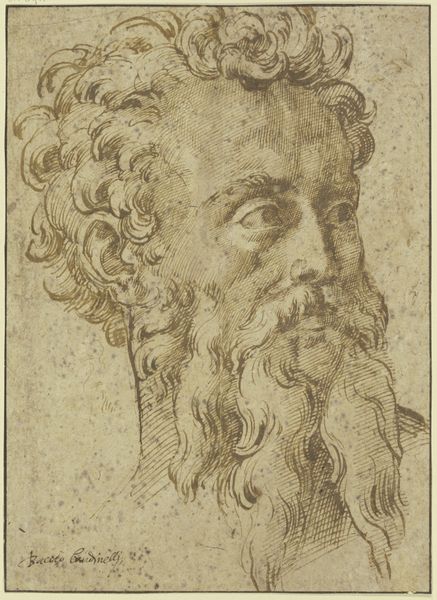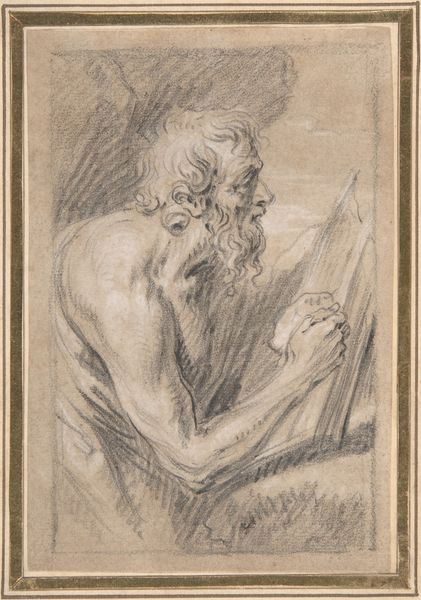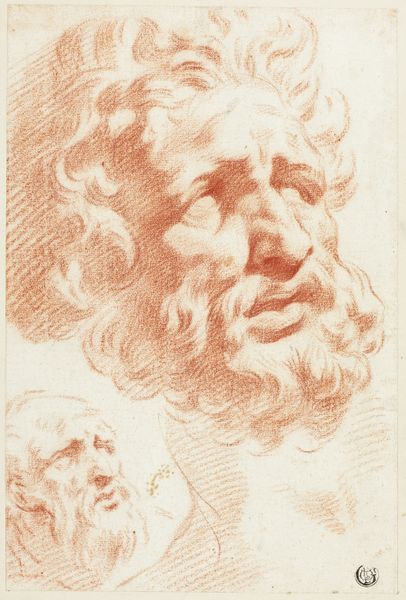
drawing, coloured-pencil, paper, pencil
#
portrait
#
drawing
#
coloured-pencil
#
self-portrait
#
baroque
#
pencil sketch
#
paper
#
pencil drawing
#
pencil
#
portrait drawing
Copyright: Rijks Museum: Open Domain
Curator: Looking at this evocative image, what are your initial impressions? Editor: The most immediate impression is the somber mood; the downward gaze of the figure lends a sense of pensiveness or perhaps weariness. Curator: Indeed. What we see here is a colored pencil drawing on paper entitled “Head of an Old Man with Beard” created by Hendrick van Beaumont around 1696. The style reflects Baroque sensibilities with a concentration on the humanity of the subject. One notable theory is that this might also be a self-portrait. Editor: I'm intrigued by the economy of line. The artist achieves a remarkable likeness and depth of emotion with what seems like a deliberately limited palette. How do the formal elements here enhance our understanding? Curator: Certainly. Given the proposed date and subject, we might think about the function of this piece in the broader art landscape of the time. Does the artist subtly critique societal hierarchies through the presentation of this older man, or make some statement about their personal circumstances through this drawing? How do you read the portrait’s gaze? Editor: Semiotically speaking, the gaze, directed downward and away, invites the viewer into a realm of introspection. We don't have a direct confrontation, but an invitation to observe a private moment. It serves a dual purpose, creating a mood and then establishing a relationship with the audience, if only implied. Curator: Absolutely, and perhaps by representing old age with such empathy, the drawing transcends simple representation, offering a commentary on respect and perhaps challenging idealized beauty standards. Considering social history alongside artistic practice encourages deeper insight into both the work and the culture that produced it. Editor: By emphasizing visual cues like light, shadow, and line, this becomes an engaging meditation on the human form and emotional interiority; it highlights what is unique about artistic expression without flattening context, inviting reflection on the interplay of individual and universal human experience. Curator: It certainly sparks the kind of reflective questions we encourage our visitors to ask themselves. Editor: Absolutely. It's a work that reveals itself layer by layer.
Comments
No comments
Be the first to comment and join the conversation on the ultimate creative platform.
